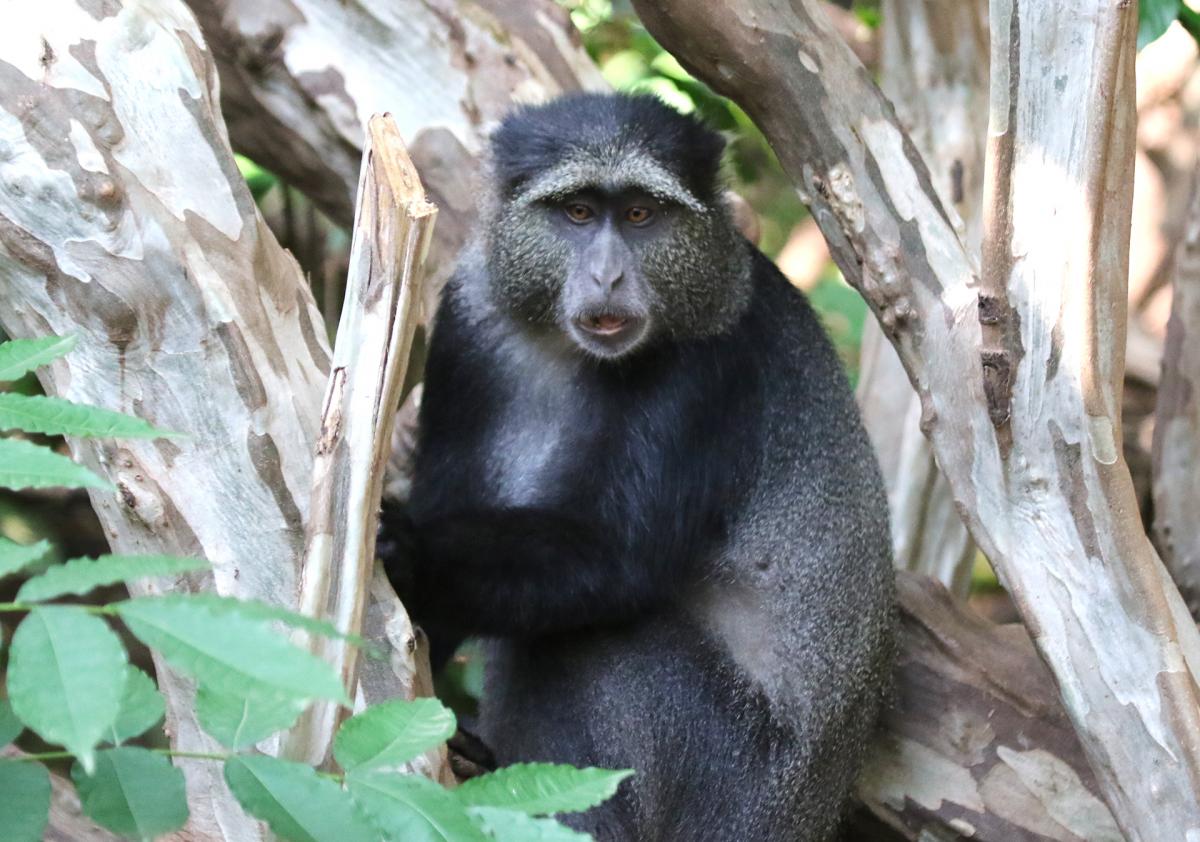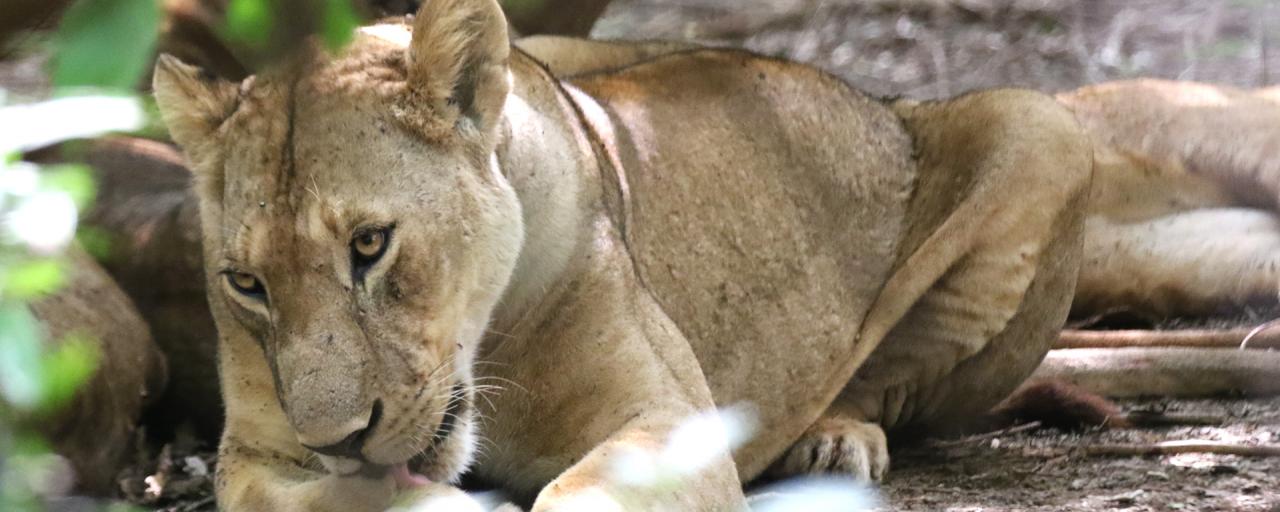Submitted by SafariADV on Sat, 2018-02-24
Today we do a safari in the Manyara Lake National Park and, since it is not very big, we can take it a bit more calmly and do not wake up at dawn, as we can turn it all in one day.
We leave at 9.00 am from our camp, we cross the town of Mto Wa Mbu and in a moment we are at the entrance of the national park.
It is the first time we visit this park and we are very happy to see it.
In this time of year it is very green, like the rest of Tanzania, but here, even during the dry season, the vegetation is always abundant.
The landscape is very beautiful, we cross a stretch of forest with majestic trees, some exceed 30 meters in height; we really like the landscape.
In this area there are species of typical forest animals, first of all there are leopards even if, with all this vegetation, they are really difficult to spot, there are lions, elephants, some antelopes, impalas and many birds that prefer wooded areas .
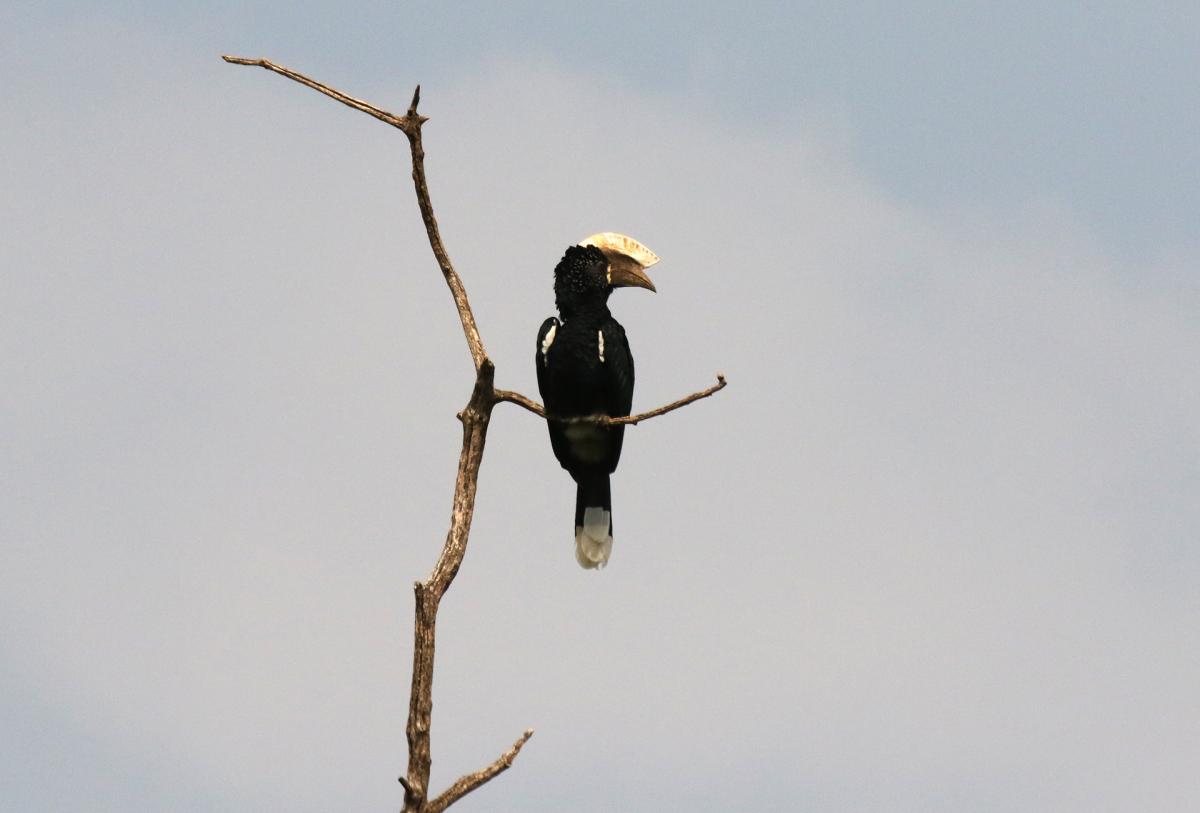
At one point on a tree branch we see a silvery cheeked hornbill, it is very beautiful with its impressive double beak, we have already seen it in the Arusha National Park at the beginning of this trip and we are pleased see it again.
In this mainly wooded part of the Manyara Lake National Park we spot several birds during our safari, like the African gray hornbill, a pair Southern ground hornbills walking in the grass, looking for some insects or small reptiles, a beautiful augur buzzard and a Tawny eagle.
As we continue, the vegetation thins out a bit and we have a little more of view, here we can spot a pair of dik diks, a klipspringer, standing on a granite rock, and some impalas engaged in eating.
Shortly after we find some elephants right at the roadside, both on our right and on our left, in these cases we must be careful not to position ourselves with the car in a way that separates the herd, because they could get nervous, especially if they have puppies as in this case.
They seem calm and we are there for a while to observe them while the more adult specimens feed on the bushes; a puppy, who surely still drinks milk from its mother, plays with a twig, dragging it around and spinning it with its trunk, it's really funny.
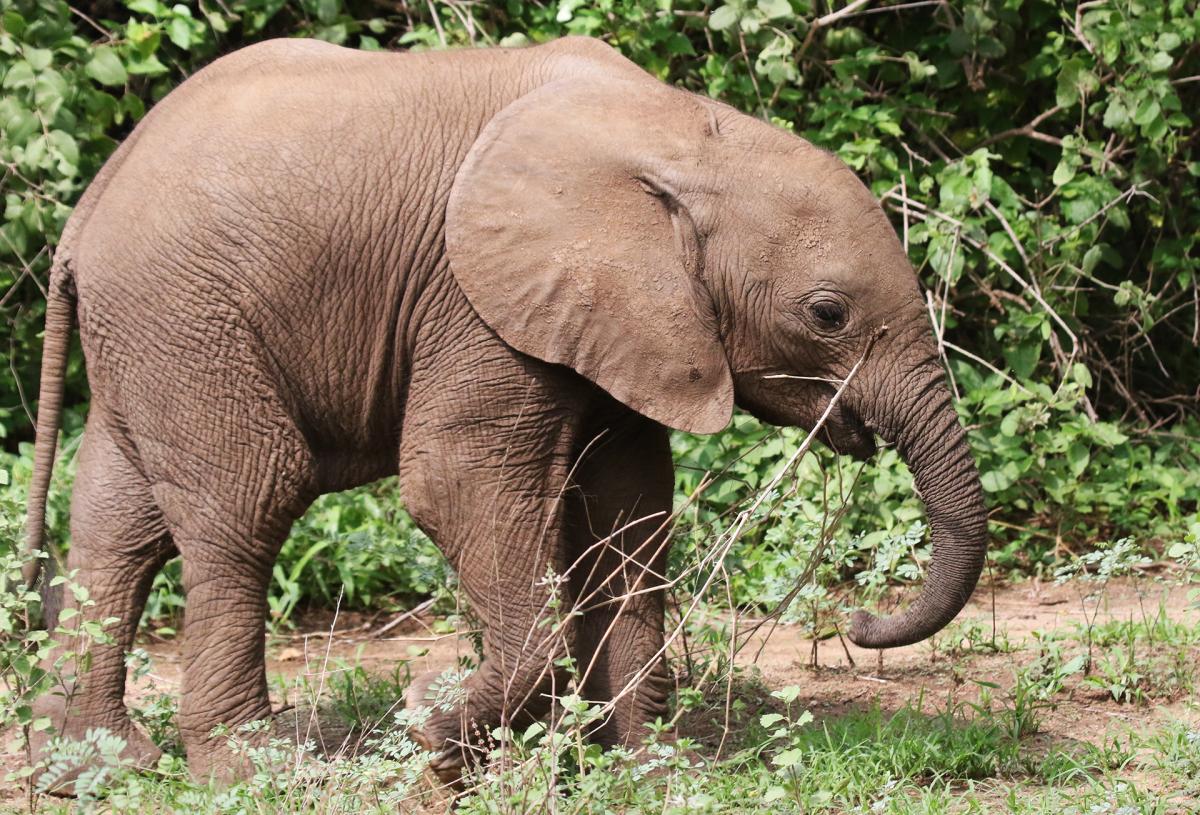
We also see a monitor lizard coming out of a termite, that was probably been abandoned by the termites who built it, and this reptile uses it as its refuge; we also see a beautiful green and orange agama and a colored lizard that we have never seen before.
As we continue the vegetation is thinner and thinner, in this area there is a portion of savannah, in fact this part of the park is called "Little Serengeti", as in the Arusha National Park and in the Tarangire National Park.
Here we see a group of banded mangooses running furtive, some wildebeests and some kingfishers, like the gray headed kingfisher and the striped kingfisher; we also spot other very colorful birds, such as the black bishop that has the black and red plumage, the red cheeked cordon-bleu and the little bee-eater, finally we have seen the guineafowl, not only the common helmeted guineafowls, but also the crested guineafowls, that are more difficult to spot.
It is almost time for lunch and so we stop in the picnic area that has a beautiful view of the lake, that, at this time of the year, does not have much water; it will be filled during the great rains, in the months from March to May.
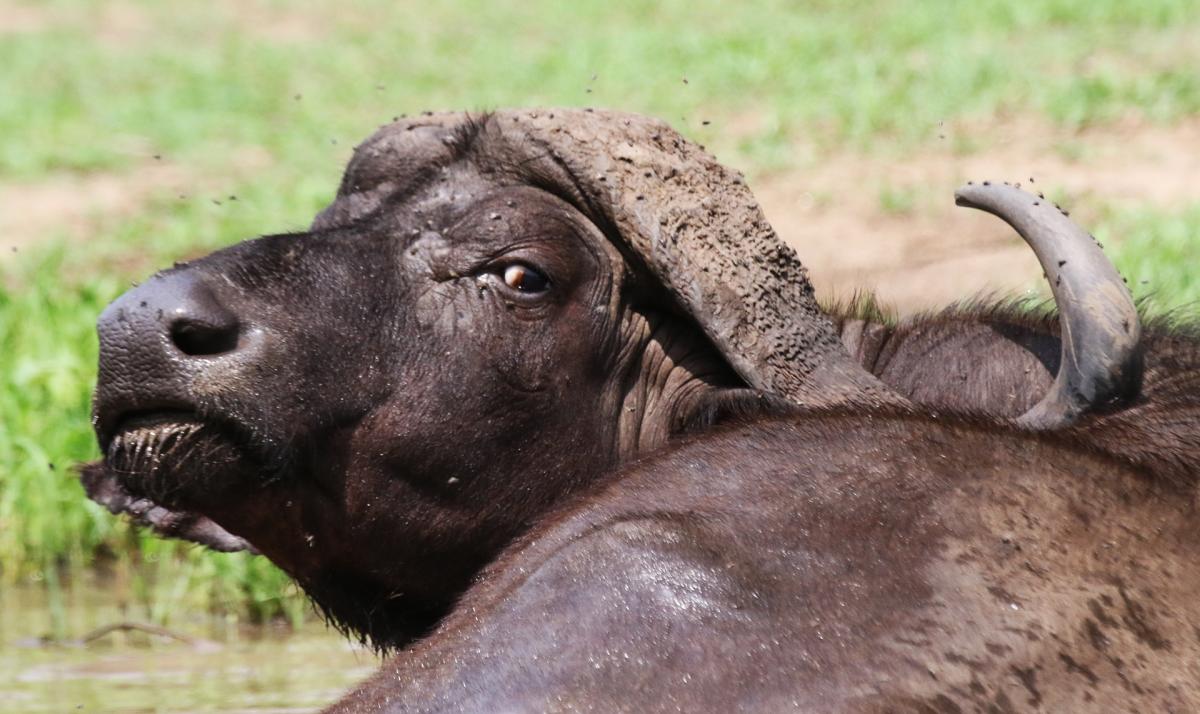
We have lunch and enjoy the view in the cool, under the covers that are above the tables; today is a hot day and we needed a bit of shade.
In the distance we see a herd of giraffes walking on the edge of the lake, probably heading towards the bush.
After lunch we go down to the lake, here there is a wooden walkway that goes into the lake; despite the heat we decide to proceed for our journey.
We see some noisy hippos and several waterfowl including the blacksmith lapwings, the Egyptian geese, some storks, pelicans and flamingos that move here from the Natron Lake this time of the year.
Our guide tells us that the flamingos remain at the Manyara Lake until around August, when they then move to the Natron Lake and, in part, to the Momela Lake in the Arusha National Park; also during the dry season in the lake there are several species of storks and cranes, that gather here because there is plenty of water.
When we return to the bank of the lake we resume Sir Stanley Speke and leave again, we head towards the entrance to the park from where we entered this morning, but doing some loops, to try to spot other animals.
Here at the Manyara Lake National Park are famous the lions that climb trees, it is not common for these felines to climb trees, they are not as agile as leopards and they are also heavier, but sometimes they do it to have a better view of the surroundings and also to avoid extremely wet or flooded land.
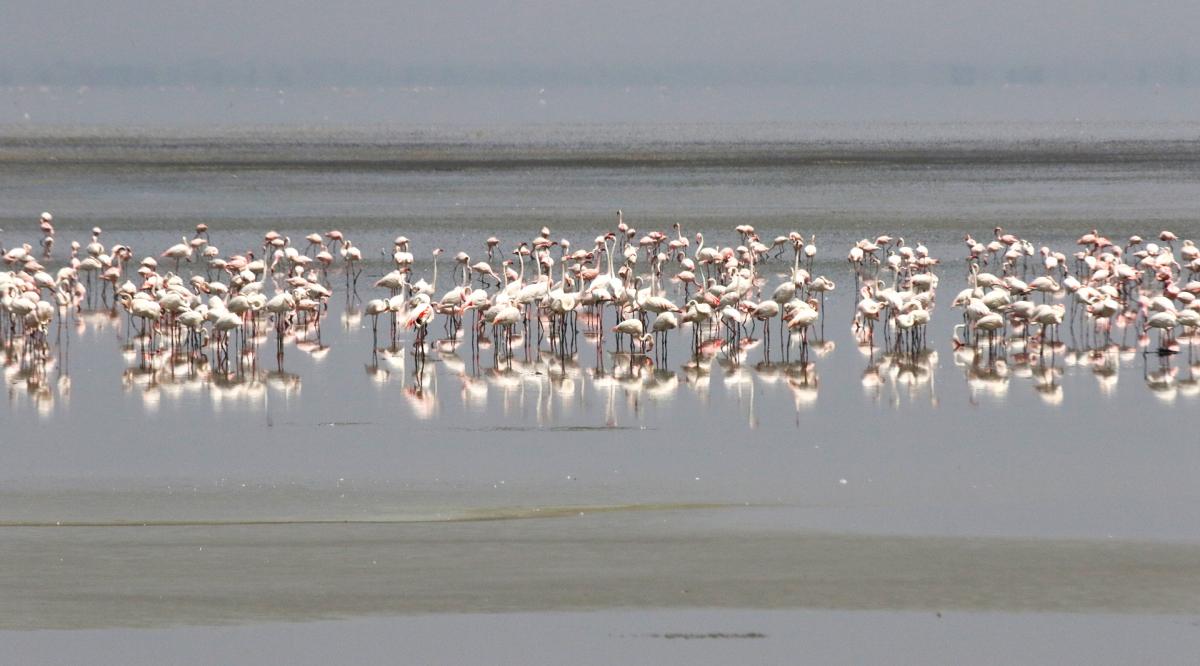
We continue and in a pool we find some buffaloes submerged in water up to their necks; when they hear us they look at us for a moment and then go back to enjoy their bath.
We leave them and go on and shortly after we meet another herd of elephants right in the middle of the road, they too have several puppies and so they are a bit careful to the movements of the cars; they cross all together, hiding the puppies in the midst of the most adult specimens, with difficulty we can see them between the legs, once they get to the other side of the road they spread out and start to eat peacefully.
Returning to the forest we also see several baboons, some vervet monkeys and the blue monkey or sykes's monkey.
It is 4:00 pm and we are heading towards the park exit, we are satisfied with this visit, we loved Manyara Lake National Park, we do not understand why many visitors, and even some tour operators, do not take it into consideration; the diversity of habitats and, consequently, of animals, makes it a very pleasant park to visit and can reserve good sightings.
